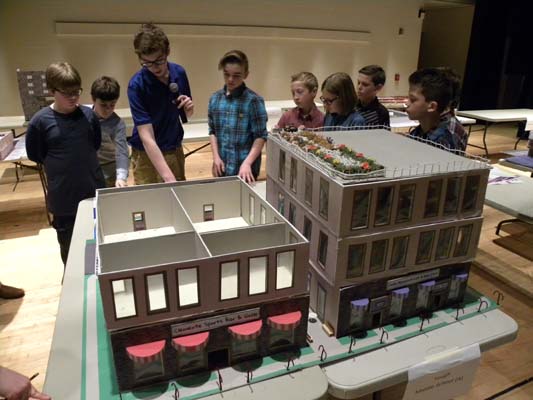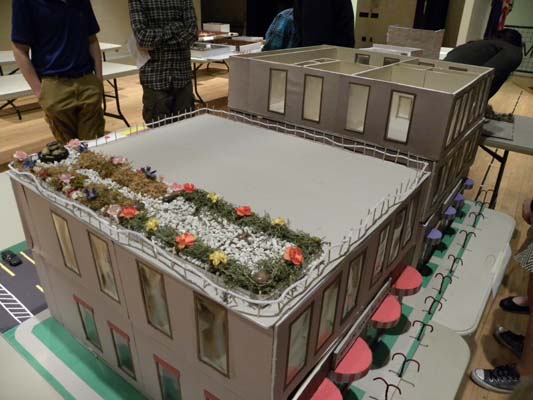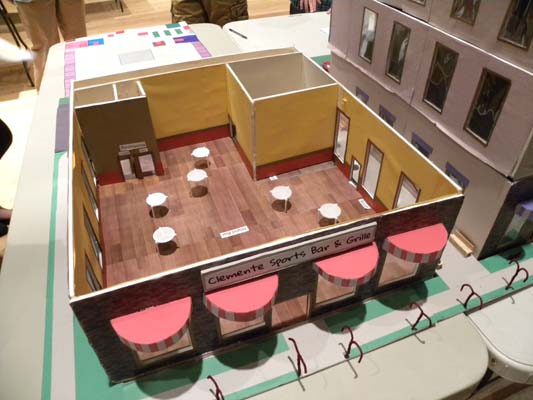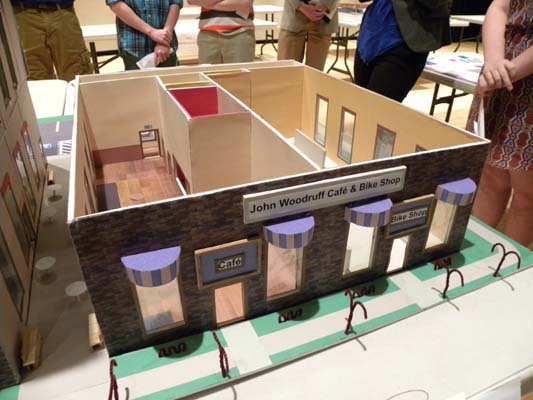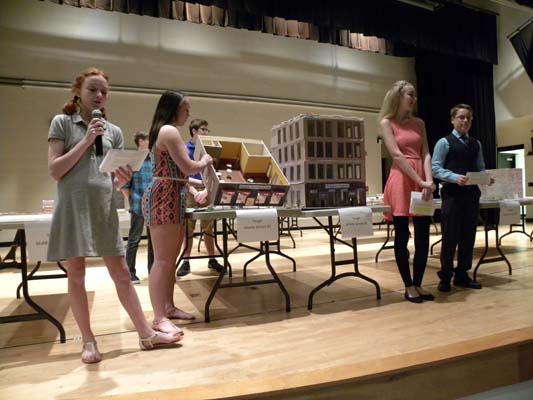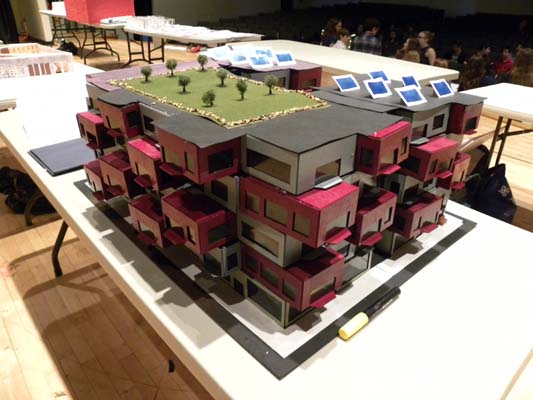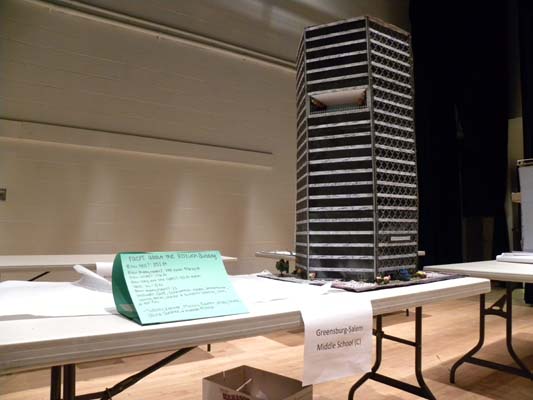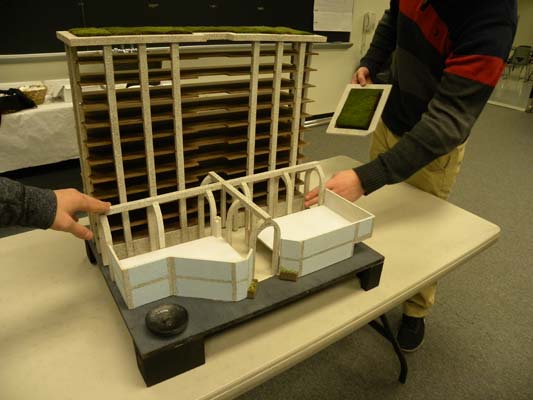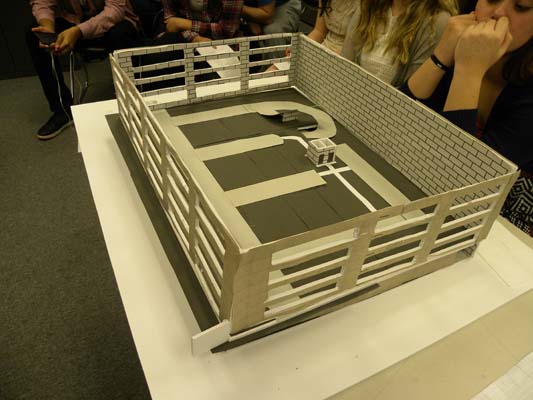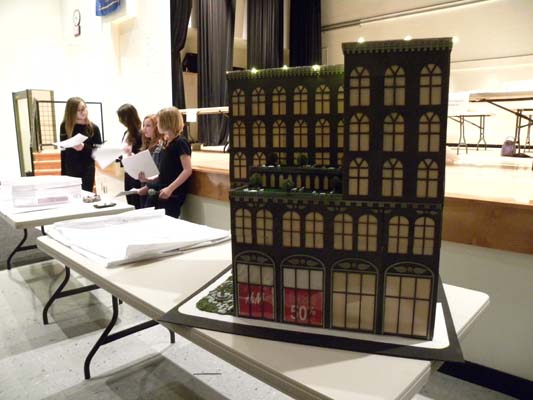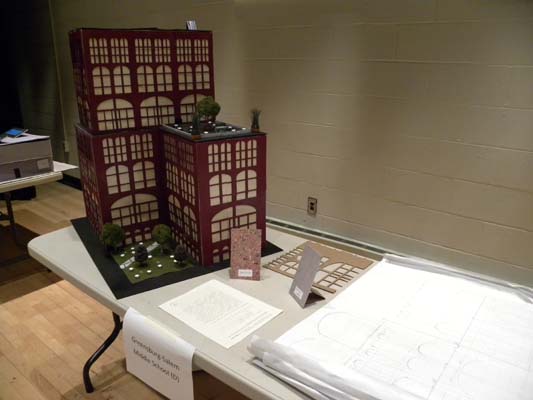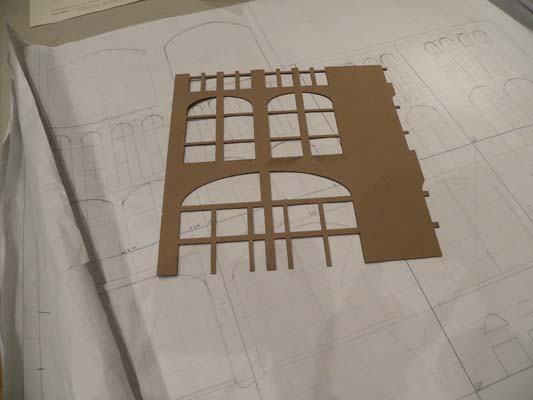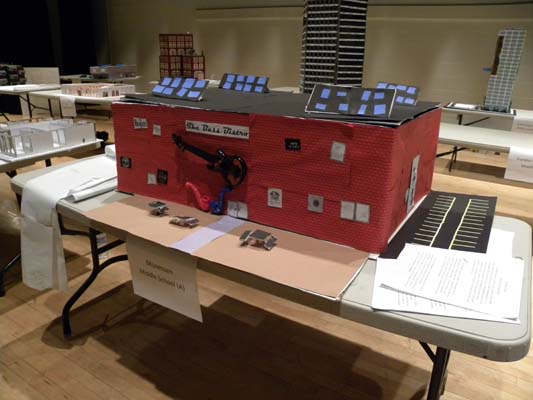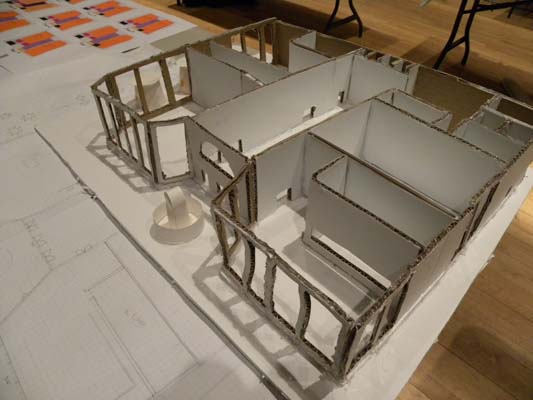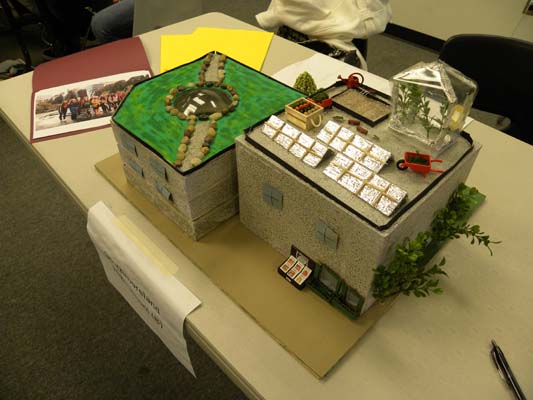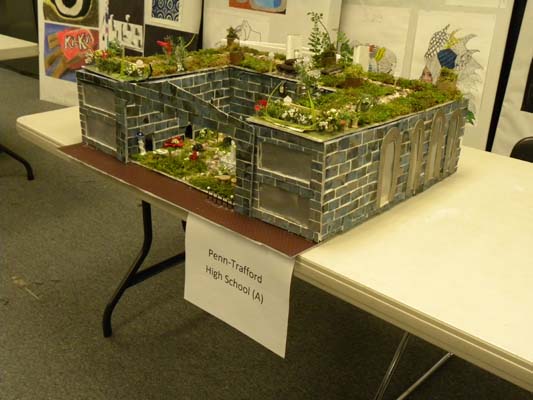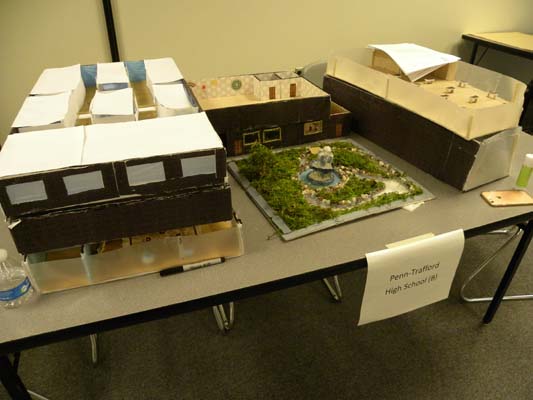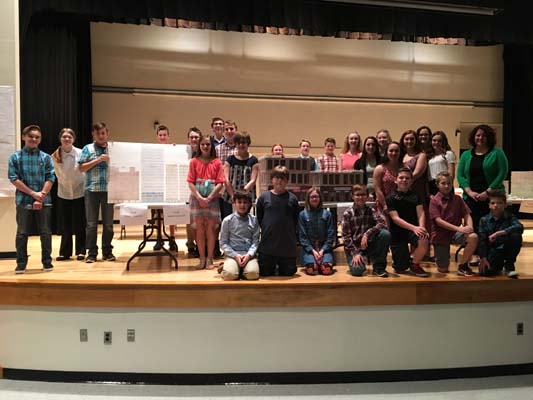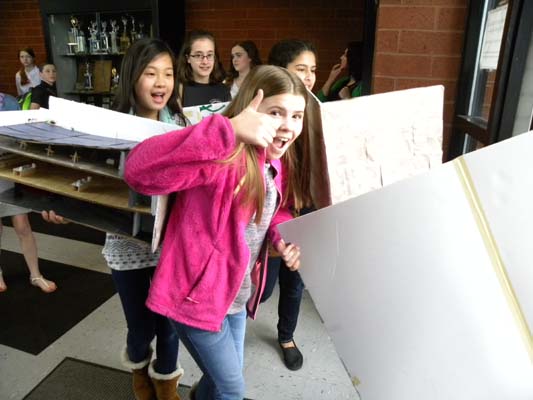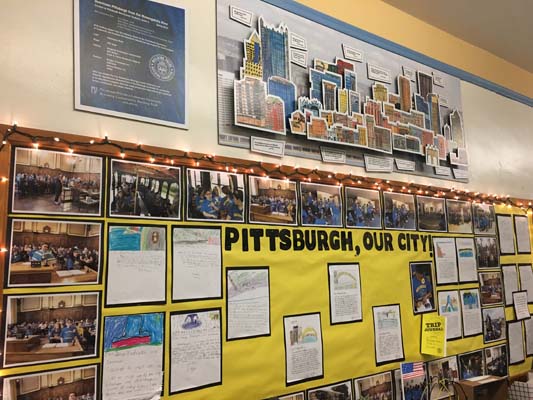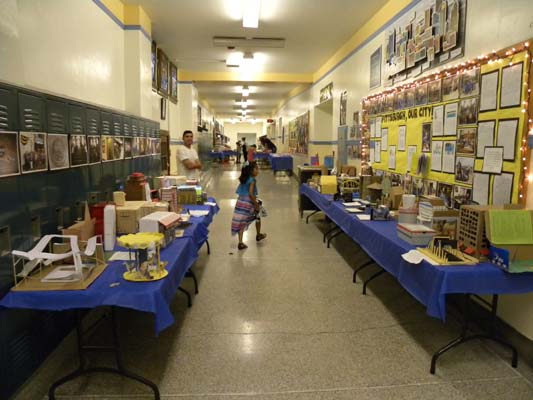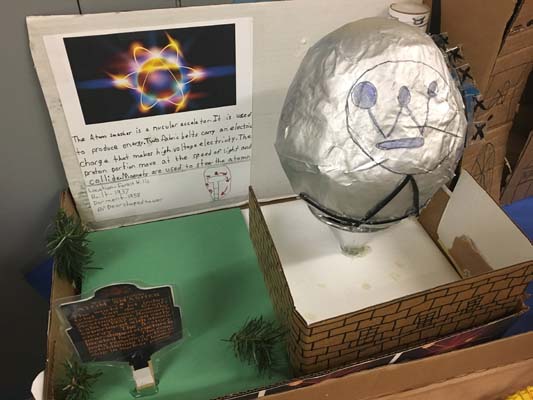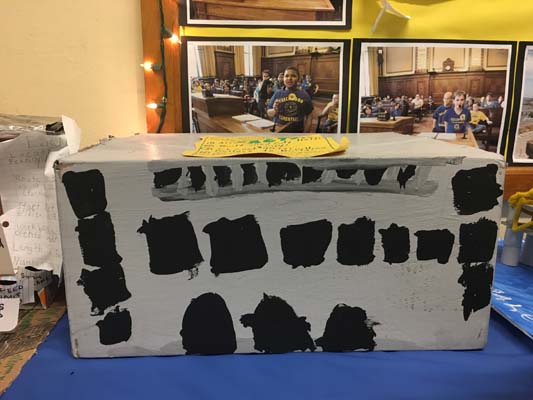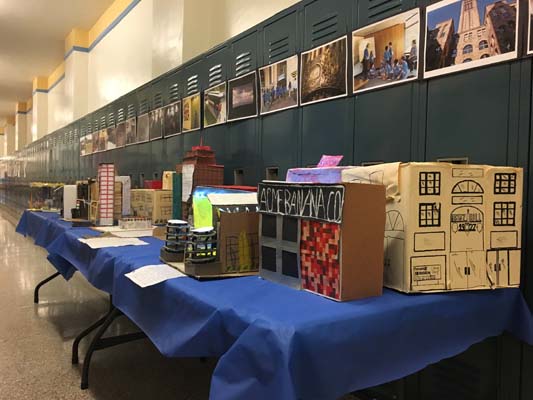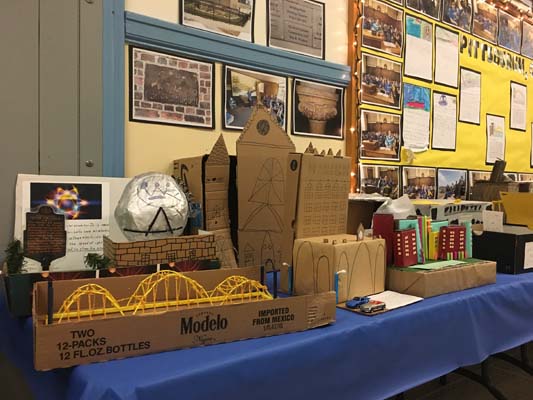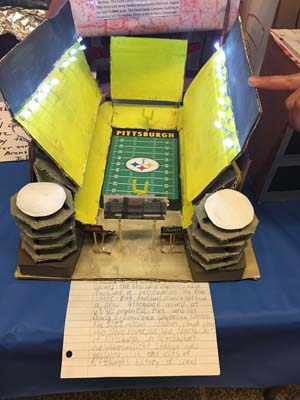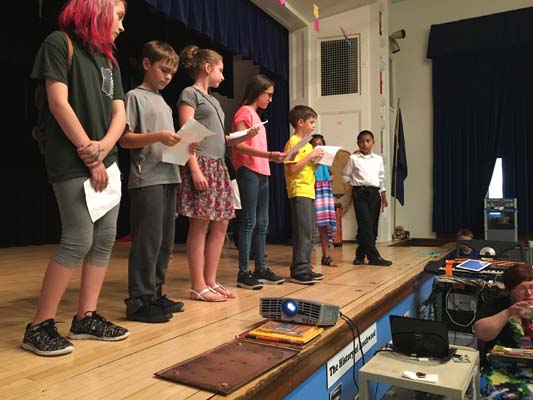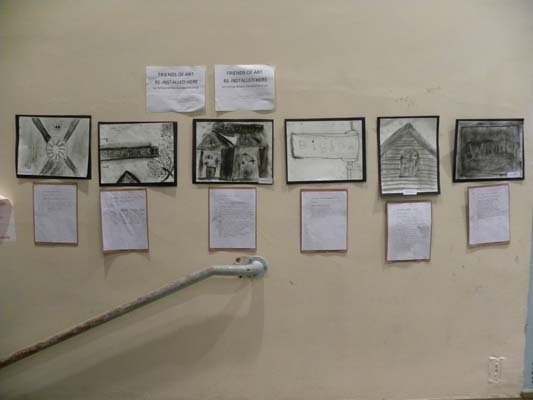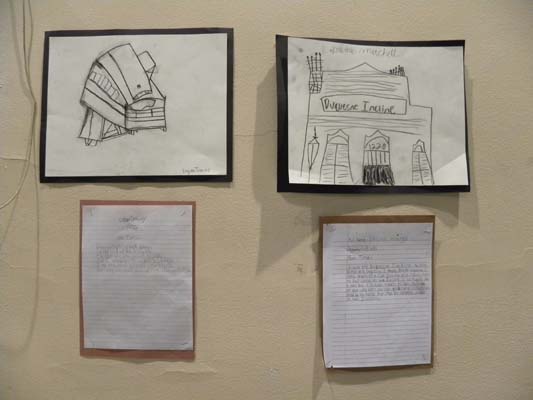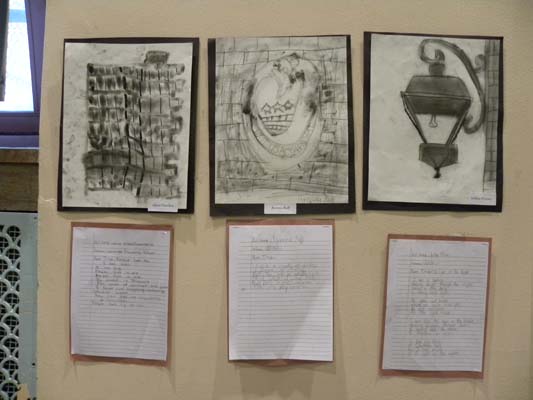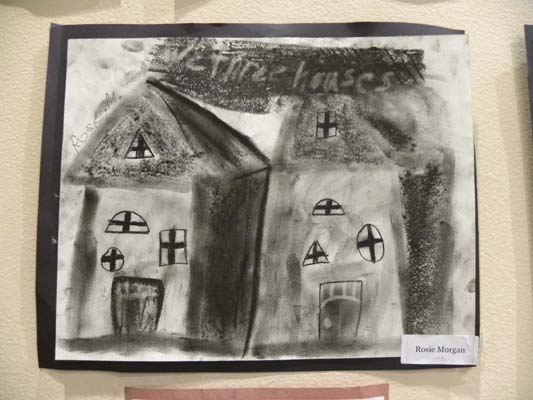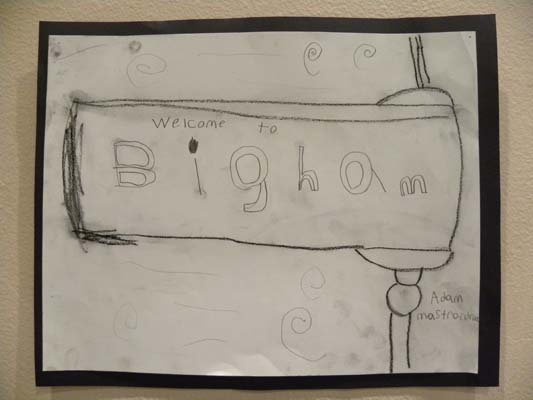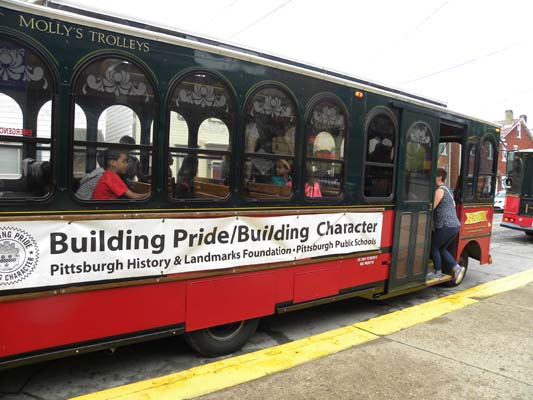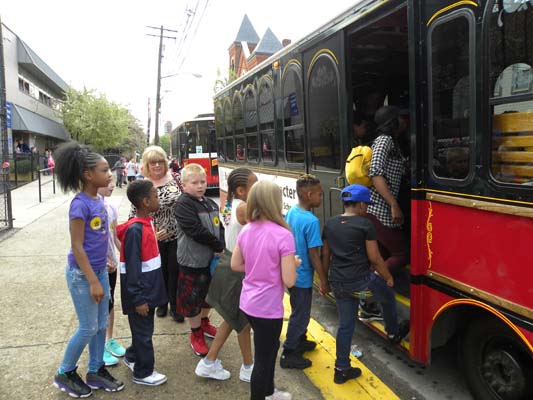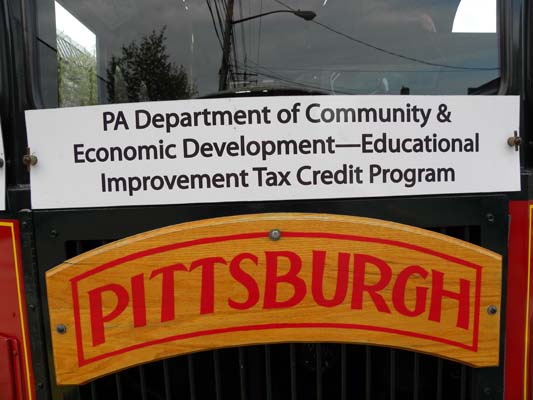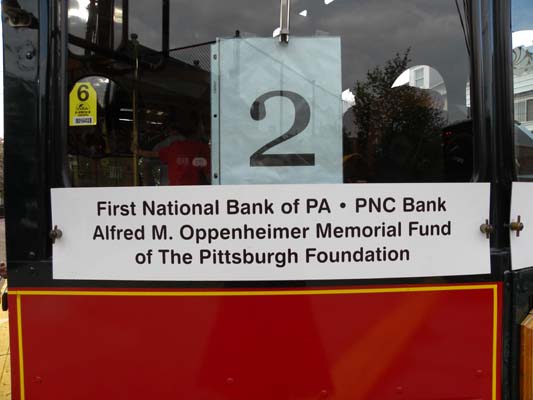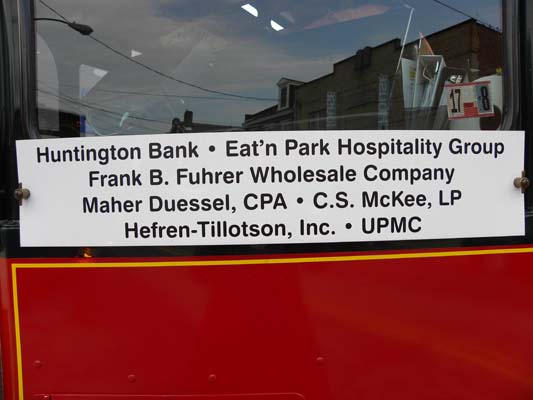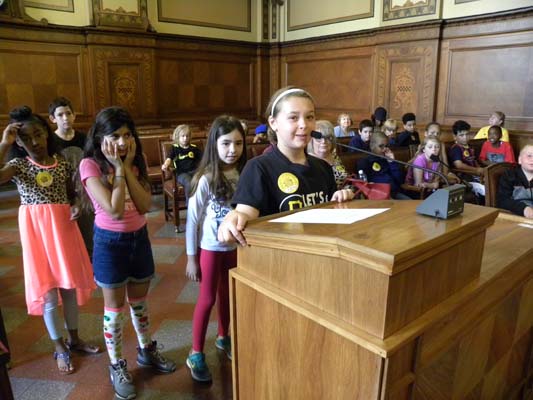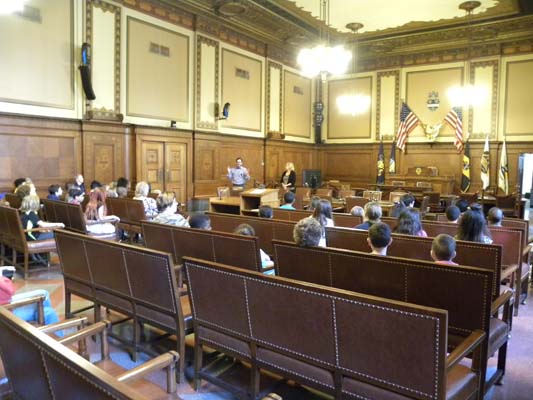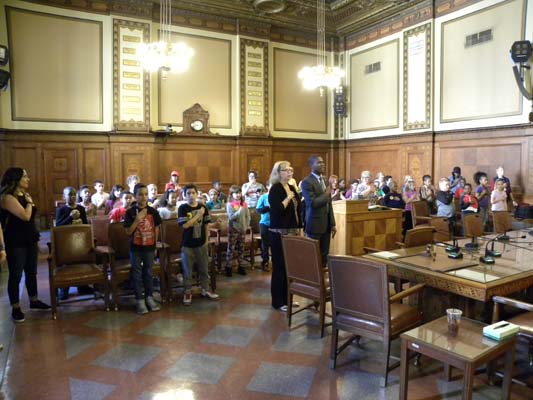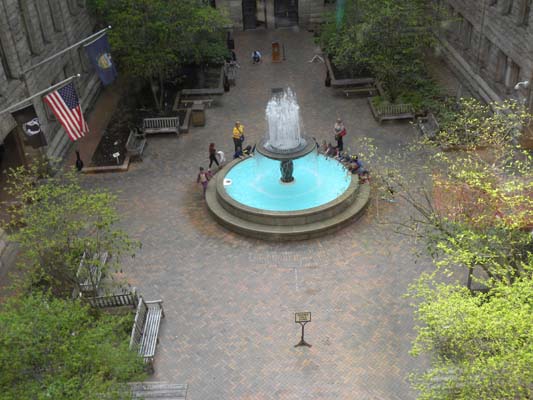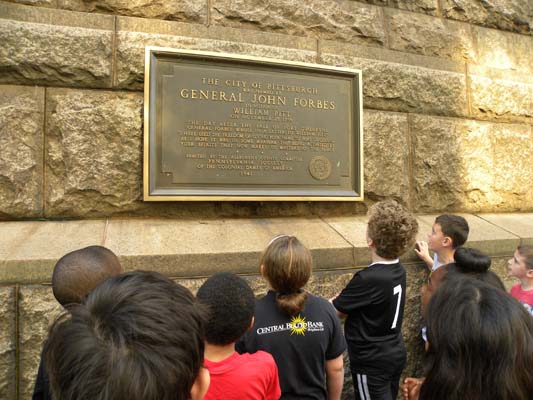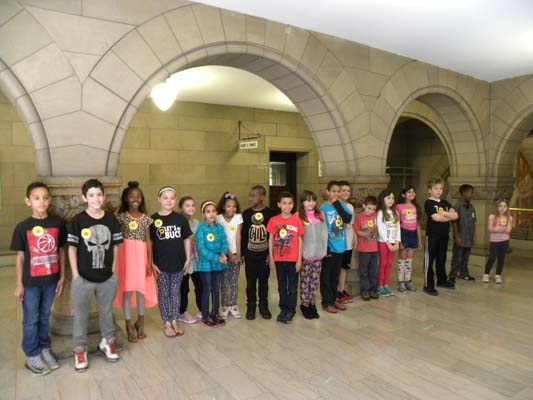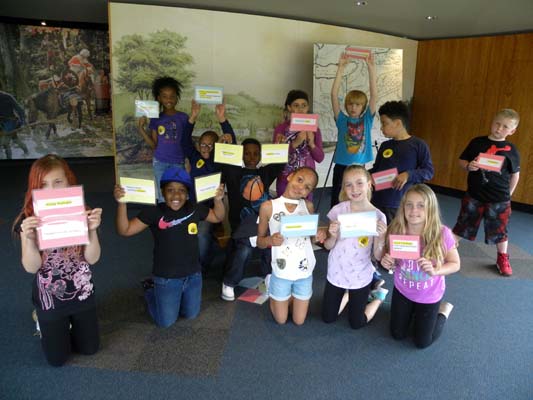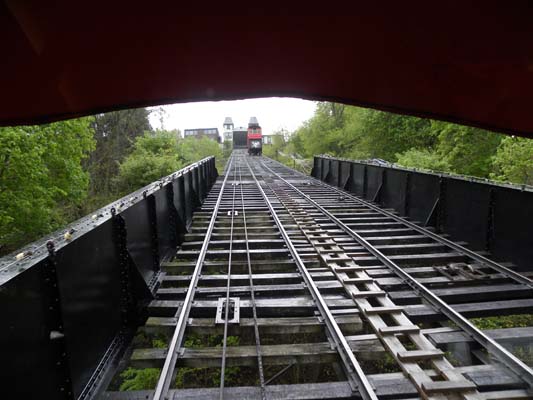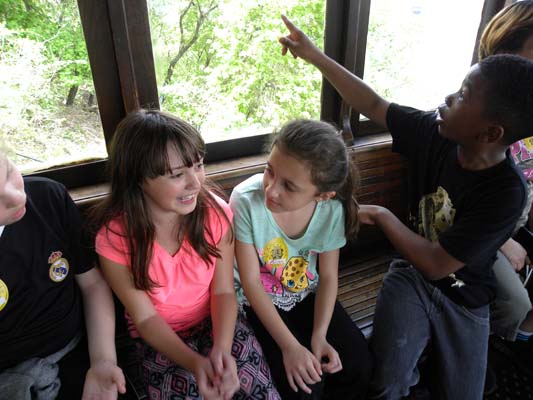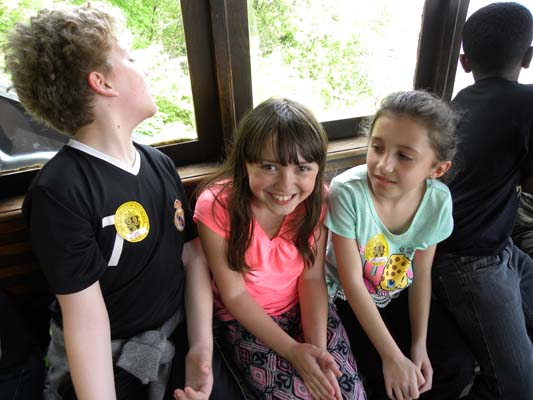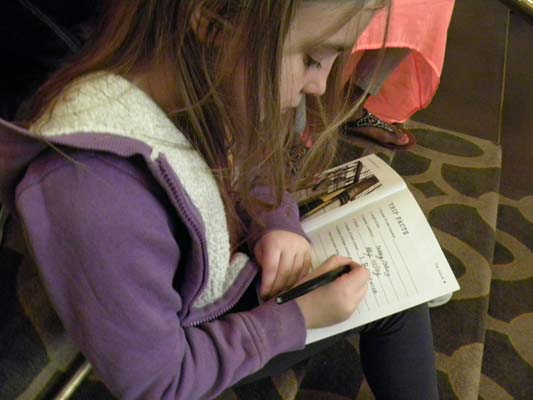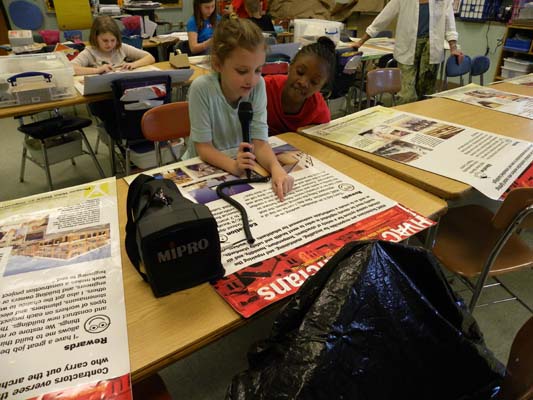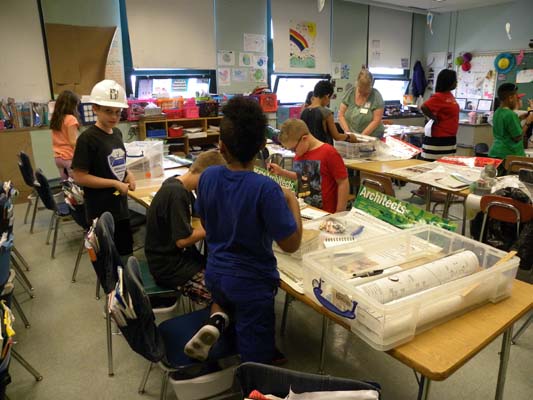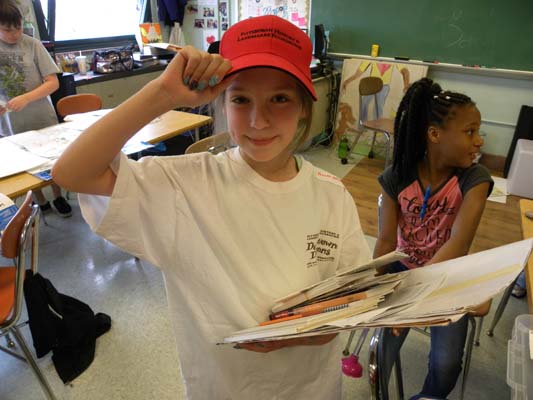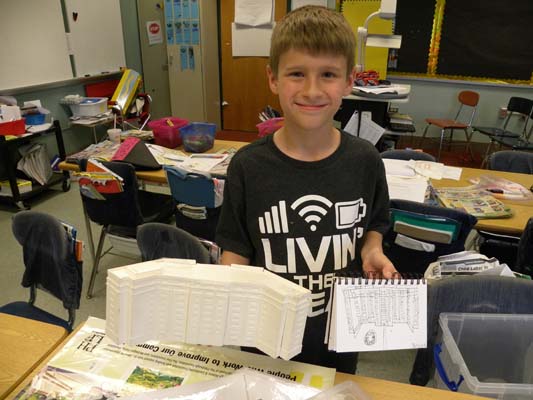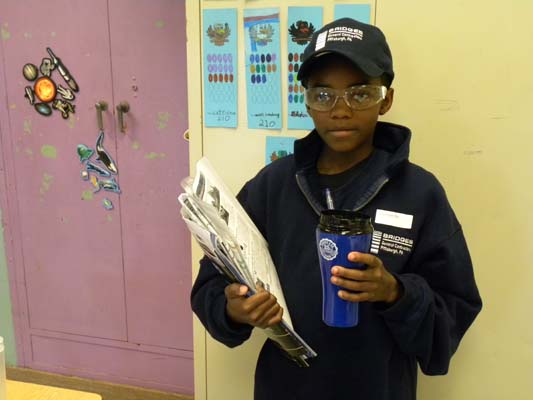
Latest News
-
Students Propose Solutions for Vacant Grant Street Lot
Westmoreland County Students Propose Solutions for Grant Street Lot that Chicago Company Hopes to Repurpose
The following story is by Ilana Kisilinsky, who is majoring in Media Studies at Yeshiva University in NYC and is spending the summer as a volunteer intern with PHLF.
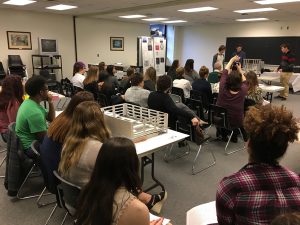 The Pittsburgh Post-Gazette reported on June 6, 2017, that the Chicago-based company, InterPark Holdings, is looking for a developing partner to revitalize and repurpose a prime Grant Street lot that has been used for years as a surface parking lot. By coincidence, just three months before, on March 30 and 31, more than 120 students from Westmoreland County Schools had presented their ideas for that very Grant Street lot, in response to PHLF’s 21st Annual Architecture Design Challenge.
The Pittsburgh Post-Gazette reported on June 6, 2017, that the Chicago-based company, InterPark Holdings, is looking for a developing partner to revitalize and repurpose a prime Grant Street lot that has been used for years as a surface parking lot. By coincidence, just three months before, on March 30 and 31, more than 120 students from Westmoreland County Schools had presented their ideas for that very Grant Street lot, in response to PHLF’s 21st Annual Architecture Design Challenge.The developers will be inspired to know that middle school and high school teams from Westmoreland County envisioned many innovative and creative uses for the site. “I think the most valuable thing [I learned] is how important it is to make cities cohesive,” said one of the participating high school students. InterPark Holdings is working hard to develop the site so it does become an integral part of downtown and fits within its prestigious neighborhood. “All development options will be considered for the site, including residential, office, hotel and retail,” according to the article.
In its annual design challenges, PHLF asks middle school and high school students to think outside the box. From October 2016 through March 31, 2017, more than 120 students from nine schools in Westmoreland County were divided into 28 teams (22 middle school and 6 high school). They were tasked with creating a master plan for the Grant Street parking lot and building a model showing an architectural element that was integral to the design concept. Inspirational words from David Lewis, Pittsburgh’s distinguished urban designer, were included in the orientation packet that was given to the students when they toured the Grant Street site and area on October 14, 2016. Mr. Lewis’ words reminded the students that architects hover between the future, with the buildings they are creating, and the past, by being inspired by the great works that came before them. Buildings tell stories, not just for us, but for generations. With this in mind, Nicole Kubas of Urban Design Associates emphasized to the students that their designs must be contextual and contribute coherence and beauty to Grant Street.
The students prepared for several months, putting time and energy into designing and constructing something amazing. They met with their teams, deliberated, and worked together to create a plan that would add to the city of Pittsburgh. During final presentations at Monessen High School on March 30 and 31, the students explained their models and drawings to a jury of architects. Their written reports were bound in a booklet and are archived at PHLF.
The student projects were filled with wonderful and unique ideas including: the “Clemente Sports Bar and Grille” and “The Frick Multi-Purpose Building, to give handicapped people a living space and to supply food.” Magnet schools were also suggested, such as the “George Shiras High School for Criminal Justice and Law,” appropriately located across the street from the City-County Building and the Courthouse, as well as an art school where “kids and adults can both make great experiences in Pittsburgh. … Students who enroll, for free, can practice and/or create whatever art they major in.”
“We are always inspired by the concepts that the students propose and are amazed by their presentations and model-making abilities,” said Executive Director Louise Sturgess. “After touring the area and spending so many months working through the Design Challenge, the students become absorbed in their work and committed to their ideas. During the design-challenge process, they strengthen their skills in math, art, science, language arts, and social studies and improve teamwork and problem-solving skills.”
The student’s presentations and remarkable ideas clearly showed the effort they put into this project and the passion they felt for it. “The students loved this project,” said one of the teachers involved. “They did everything on their own, so this was a great learning experience for them. Not only did they learn how to build their projects, they learned necessary and valuable social skills as well. ‘They were so proud that they did it all on their own!’”
The students now have a better understanding of the work that InterPark Holdings has ahead of them, and wish the developers the best of luck.
-
Architecture Feature: William Halsey Wood in Pittsburgh
“Completely original and unprecedented”: William Halsey Wood in Pittsburgh and Southwestern Pennsylvania
By Albert Tannler
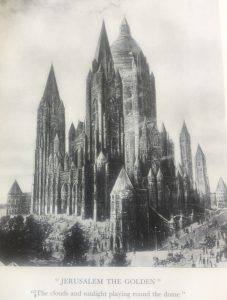 In 1937, Ralph Adams Cram, then this country’s leading church architect, wrote the preface to a book about a New Jersey architect who had been dead for 40 years and whom he had never met. This architect had been, Cram wrote, “a man of genius whose name, after so many years, has been forgotten by all but a few of my own generation and profession.” [1]
In 1937, Ralph Adams Cram, then this country’s leading church architect, wrote the preface to a book about a New Jersey architect who had been dead for 40 years and whom he had never met. This architect had been, Cram wrote, “a man of genius whose name, after so many years, has been forgotten by all but a few of my own generation and profession.” [1]The architect was William Halsey Wood (1855-1897), perhaps best known for his 1888 competition design for the Cathedral of St. John the Divine in New York City. Wood’s design, “Jerusalem the Golden,” was one of four finalists. Although the commission went to another firm, Wood’s design was displayed at the Chicago World’s Fair in 1893 and won a gold medal.
“Halsey Wood’s design,” Cram wrote, “was neither Richardsonian nor Victorian Gothic, nor indeed quite like anything else ever recorded in history; it was an artistic tour de force, completely original and unprecedented.”[2] Had Wood’s design been chosen:
it might very possibly have considerably modified the course of development in American architecture. In a sense he anticipated [Louis] Sullivan, [Frank Lloyd] Wright, [Bertram] Goodhue and the other path-breakers towards modernism …. Halsey Wood indicated the possibility of a rather convincing amalgamation of historic tradition and a revivifying modernism, and he very well might have become the leader of a new school of design.[3]
Wood was, Cram concludes, “a great and creative artist, measurably in accomplishment, but greater still in potentiality.”[4]
Wood’s designs for Southwestern Pennsylvania included:
- the Carnegie Library of Braddock (1888-89), which was the first library building in the United States to be funded by Andrew Carnegie;
- a design for the Carnegie Library of Pittsburgh,
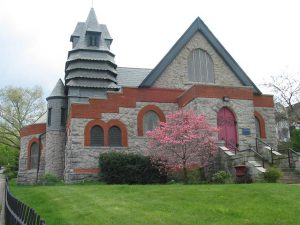 illustrated in the American Architect & Building News, May 21, 1892, but not realized;
illustrated in the American Architect & Building News, May 21, 1892, but not realized; - the Church of the Good Shepherd in Hazelwood (1891-92), characterized as “rather fantastic”[5] by the region’s leading architectural historian, James D. Van Trump;
- St. Peter’s Episcopal Church, Butler, Pa. 1895-96)[6]; and
- the Church of the Ascension (1896-98) in Pittsburgh. [7] Wood was given the commission and completed the design, but he died of tuberculosis on March 13, 1897 at the age of 41. The architectural drawings were received from his estate and the building was erected by Alden & Harlow, whose predecessor firm, Longfellow, Alden & Harlow, had added the music hall to Wood’s Braddock Library in 1893. Wood’s design draws upon Late English Gothic forms. The interior is yellow Kittanning brick (now painted) with a great wooden ceiling and arresting saw-tooth chancel arch; the rough stone exterior is dominated by a Tudor tower modeled after one of 1506 in Wrexham, Wales. Van Trump, in his 75th Anniversary article on Ascension, states:
It is the rugged, masculine mass of the building, the rock-like texture of its walls and the paucity of ornament which give an especially ‘Pittsburgh’ tone and feeling to the structure. Wood, like Richardson before him in the design of the great Allegheny County Court House and Jail, succeeded almost spectacularly in interpreting the spirit of the Steel City.[8]
The church furnishings were designed by J. & R. Lamb Studios of New York City; eighteen stained glass windows were designed and made by Healy & Millet of Chicago
––George Healy and Louis Millet had attended the Ecole des Beaux-Arts in Paris with Louis Sullivan and these artists frequently worked together; and in 1918-19, redecoration of the small chapel on the south side of the chancel began, supported by the Gordon family. Ralph Adams Cram designed the Chapel and the six small antique glass windows are the work of Charles J. Connick of Boston, Cram’s preferred glazer (who grew up in Pittsburgh and apprenticed in glass studios here).
Although Connick’s glass in the Gordon Chapel consists of simple gray and blue “grisaille” panels, colorful saints eventually filled the clerestory windows that Healy & Millet left empty. The antique glass windows were designed and made by Howard Wilbert of Pittsburgh Stained Glass Studios (1918) and George Hunt of Hunt Studios (1962-64) and are ambitious local examples of Modern Gothic glassmaking. The installation of the last of these windows in 1964 concluded the dialogue between architects, designers, and craftsmen begun in 1896.
One of the most interesting and satisfactory ecclesiastical buildings that Wood designed and completed during his lifetime is the Church of the Good Shepherd (1891-92) in Hazelwood. Van Trump observed in 1967:
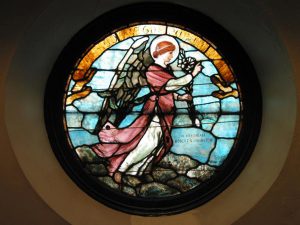
This asymmetrical and rather fantastic structure with its frilled shingle tower recalls very pleasantly the rugged, stylish “natural” contours of those late nineteenth century suburban churches boldly designed by a small number of “original” architects, a group that might be described as the “boulder and shingle” school. . . . The church should be preserved as a unique local representative of its type.[9]
In 1997 Walter Kidney wrote:
Good Shepherd has an artfully rustic expression. An industrial town has grown around it, yet with its low walls of rubble and dark-red brick, its prominent roof, its much louvered, shingled little tower it announces itself as a simple country church. Such a quality of sophisticated humility, a practice of rejecting pompous gestures and ornamental displays in favor of plain materials and vernacular forms––yet composing these with a very knowing eye––had begun early in the Romantic period and would persist far into the twentieth century.[10]
The stained glass windows were designed and made by Ludwig Grosse (1862-1917), born and educated in Munich, Germany. Grosse arrived in Pittsburgh in 1888. In 1889 he began to work in stained glass; in 1890 he was working for the Pittsburgh glass firm of S.. S. Marshall & Brothers, purchased their downtown studio and opened the L. Grosse Art Glass Company, which continued under his name through 1898. In 1899 and 1900 he is listed as a dealer in “art works.” Grosse appears to have left Pittsburgh thereafter.
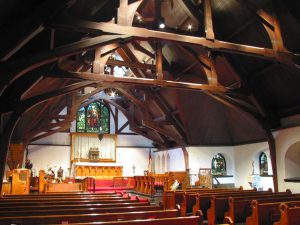 In 1897, Gross hired William Willet of Philadelphia, who moved to Pittsburgh and became art director of the L. Grosse Art Glass Company; in 1899 Willet established his own firm, Willet Stained Glass & Decorating Company, in Pittsburgh.[11]
In 1897, Gross hired William Willet of Philadelphia, who moved to Pittsburgh and became art director of the L. Grosse Art Glass Company; in 1899 Willet established his own firm, Willet Stained Glass & Decorating Company, in Pittsburgh.[11]Gross’s work at The Church of the Good Shepherd was described in The Bulletin (October 29, 1892):
The dedicatory services of the Protestant Episcopal Church of the Good Shepherd, Hazelwood . . . will take place tomorrow morning . . . . The inside is beautifully frescoed and the windows, made from designs by Mr. Ludwig Grosse, of this city, are both handsome and artistic.[12]
Illustrations:
- “Jerusalem the Golden”
- Church of the Good Shepherd – exterior
- Church of the Good Shepherd – interior
- Robert S. Johnston Memorial window, designed by Ludwig Grosse.
[1] Ralph Adams Cram, “Preface.” Memories of William Halsey Wood By His Wife (Privately printed 1937), 9.
[2] Ibid., 10.
[3] Ibid., 11
[4] Ibid., 13.
[5] James D. Van Trump, “Church of the Good Shepherd,” Landmark Architecture of Allegheny County Pennsylvania (Pittsburgh History & Landmarks Foundation, 1967), 121.
[6] Butler is 29 miles north of Pittsburgh; the first service at this church was held January 17, 1897.
[7] The primary sources for information about the Church of the Ascension are James D. Van Trump, “Pittsburgh’s Church of the Ascension,” The Charette 36:6 (June 1956), 14-16, 29, reprinted in Life and Architecture in Pittsburgh (Pittsburgh History & Landmarks, 1983), 171-176, and Van Trump, “The Church of the Ascension, Pittsburgh: A Brief Chronicle of Its Seventy-Five Years,” Western Pennsylvania Historical Magazine 48:1 (January 1965): [1-18], 15; 17. Van Trump’s research notes are preserved in the James D. Van Trump Library, Pittsburgh History & Landmarks Foundation. See also Marilyn P. Whitmore, Centennial History: Church of the Ascension 1889-1989. Pittsburgh: Privately printed, 1989.
[8] Van Trump, “A Brief Chronicle,” 10.
[9] Van Trump, Landmark Architecture of Allegheny County, Pennsylvania (PHLF 1967): 121.
[10] Kidney, Pittsburgh’s Landmark Architecture: The Historic Buildings of Pittsburgh and Allegheny County (PHLF 1997): 459.
[11] See Albert M. Tannler, William Willet in Pittsburgh 1897-1913: A Research Compendium (PHLF 2005).
[12] See also “Ludwig Grosse Art Glass Company,” History and Commerce of Pittsburgh and Environs: Consisting of Allegheny, McKeesport, Braddock and Homestead 1893-1894 (New York: A. F. Parsons Publishing Co., 1893): 83.
-
A Tribute to D. William “Bill” Roberts (1931–2017)
Editor’s Note: Cathy McCollom, the director of River Town Program and the principal of McCollom Development Strategies, is a trustee of Landmarks Development Corporation and a former PHLF staff member. She wrote the following tribute to Bill Roberts who died on Saturday, April 22 at his home in Sewickley. Bill was a trustee of Landmarks Development Corporation and a former PHLF staff member. He was part of PHLF’s development of Station Square from the beginning, in the mid-1970s, after serving as a marketing director with the Pittsburgh Symphony and as an actual captain (and then marketing director) for the Gateway Clipper. He helped create the marketing plan for Station Square, which drew three million people annually to our historic, riverfront development in the early 1990s. As Cathy writes:
When I think of Bill Roberts, I think of two words: kindness and competence.
Before I moved to Pittsburgh from Louisville, Kentucky, Arthur Ziegler sent me to “connect with Bill Roberts” during the Regatta. Coming from where a lady’s proper dress for almost any affair, certainly something called a Regatta, included high heels and a hat, I arrived at the river at Point Park wearing just that. The park was brimming with vendors and people ––none of them in heels!––and the river was teeming with colorful boats. And out in one of those boats was Bill Roberts.
I picked my way carefully along the shore until I found an official looking guy with a radio who called for a boat to pick me up and take me to the middle of the river where I would meet Bill for the first time.
Bill had a radio in each hand and there was another one chirping on deck. Always a man of few words, he kindly refrained from commenting on my inappropriate attire. Instead, he helped me to a chair where I sat for the next several hours, totally amazed, and a bit intimidated, as Bill calmly and coolly solved crisis after crisis, and answered question after question, with high speed boats roaring around us all the while. It was an unforgettable introduction to the marketing and event planning acumen of Bill Roberts.
Bill was never critical, and rarely ruffled, despite what was often mayhem around him. He taught me how to ignore naysayers; how to organize, coordinate and plan; how to work with sponsors and partners to the mutual benefit of all. He taught me the best way to clean up after every event. And he did it all while remaining coolly competent and always kind.
I still follow his advice, and hopefully his example, to this day. Thirty years and hundreds of events later, I am still in awe of the guy who ran the Regatta.
-
Architecture feature: The Guastavino Company in Pittsburgh
By Albert M. Tannler
Last month we explored buildings in Pittsburgh designed by New York architect Grosvenor Atterbury. One of these, now gone, was the Phipps Natatorium (1907-09), 540 Duquesne Way, with tile work by the Guastavino Company, described as “a polychromed barrel vault with a regular circular geometry. A vaulted skylight system was integrated into the graceful lines of the circular arches.”[1]
Born and trained in Barcelona, Rafael Guastavino (1842-1908) is best known for his construction company in New York City, which used an adaptation of Catalan constructional methods to create shell vaulting and stairs of cohesive tiles hand-assembled in strong mortar. Rafael Guastavino, Jr. (1872-1950) continued the firm after his father’s death in 1908. Guastavino tile was very popular in early 20th-century monumental architecture.
It was George R. Collins, professor of the history of art and architecture at Columbia University, who rediscovered Guastavino tile.
As he sat in the back of the university’s St. Paul’s Chapel (1907) . . . on October 17, 1961, his eyes wandered to the ornate herringbone of tiles of the domed ceiling. The curves and colors reminded him of the work of the Catalan architect Antoni Gaudi (1852-1926), about whom he had recently completed a book. As he studied the ceiling, he suddenly realized that it used the same vaulting technology that Gaudi had deployed in many of his famous works in Barcelona.
This moment of discovery caused Collins to look more carefully at the architecture of the Upper West Side of Manhattan. . . . It seemed that nearly every block of New York City had a tile-vaulted space. Collins recognized that what looked like a decorative tile finish to the causal eye was actually a structural system of interlocking tiles, legendary in Spain for its ability to support tremendous loads with a remarkably small amount of material. . . . After years of studying Catalan art and architecture, Collins sensed that these [Guastavino] Spanish immigrants had a significant influence on American building construction, but it was not until he began to create an inventory of Guastavino tile vaulting that he fully appreciated the quality and importance of the company’s work. In May of 1962, Collins traveled to Pittsburgh to give a lecture, and he was astonished to find that thirty of the most significant buildings in the city contained Guastavino vaulting. These included major buildings at the local universities and many of the city government buildings, as well as numerous churches and synagogues.[2]
Patents
Guastavino filed three patents in 1885 for the construction of fireproof buildings, which marked the beginning of decades of patent applications by Guastavino and his son. The earliest patents helped Guastavino to gain credibility in the American building industry and pushed him toward a career as a building contractor specializing in vault construction rather than working as an architect.[3]
Pittsburgh architects
The Guastavino Company worked repeatedly with many architectural firms, the most notable being McKim, Mead, and White; Bertram Goodhue; Charles Haight; Cass Gilbert; Warren and Wetmore; and Henry Hornbostel.[4]
Among the architects who may be considered “Pittsburgh architects” were Henry Hornbostel, who commissioned five academic buildings, two synagogues, and the City-County Building in Pittsburgh as well as several bridges and arcades in New York. Parks and Neumann state: “Of all the architects who used the Guastavino Company, Hornbostel’s work is the most varied in the purely structural sense.”[5] Pittsburgh-based architects included Thomas Hannah; Alden & Harlow; Stanley L. Roush; E. B. Lee; A. F. Link; Benno Janssen and his partners Franklin Abbott and William Cocken; and Ingham & Boyd. E. P. Mellon was born and educated in Pittsburgh before moving to New York in his mid-30s. Twentieth-century Modern American Gothic architecture was represented by Ralph Adams Cram of Boston, Bertram Goodhue of New York and their partners, and Charles Z. Kauder and Wilson Eyre & Mcllvaine of Philadelphia. James W. Windrim of Philadelphia produced a late example of the American Renaissance. York & Sawyer and Trowbridge & Livingston were based in New York. Walter Kidney wrote about a “sober Modernistic manner that began and ended with allusions to Classical architecture” in Trowbridge & Livingston’s Gulf Building.
There are Guastavino tile buildings in Boston, New York, Washington, D. C. and elsewhere, but the range and diversity and character of buildings in Pittsburgh 1905-1942 suggests we focus on them.[6]
Academic buildings
Carnegie Mellon University Porter Hall, 1905-07; 1915, Henry Hornbostel
Carnegie Mellon University Doherty Hall, 1908-09
Carnegie Mellon University Hamerschlag Hall, 1914
Carnegie Mellon University Hamburg Hall, 1916
Carnegie Mellon University Baker Hall, 1919
Community College of Allegheny, West Hall, 1915, Thomas Hannah [Western Theological Seminary]
Chatham University Mellon Board Room, 1917, E. P. Mellon [A. W. Mellon residence]
University of Pittsburgh Heinz Memorial Chapel, 1934, Charles Z. Klauder
University of Pittsburgh Cathedral of Learning, 1937
University of Pittsburgh Stephen Foster Memorial, 1937
Ecclesiastical buildings
Calvary Episcopal Church, 1906, Ralph Adams Cram for Cram, Goodhue & Ferguson
Rodef Shalom Synagogue, 1906, Henry Hornbostel
First Baptist Church, 1911, Bertram G. Goodhue for Cram, Goodhue & Ferguson
B’Nai Israel Synagogue, 1924, Henry Hornbostel
St. Boniface R. C. Church, 1926, A. F. Link & Associates
Holy Rosary R. C. Church, 1929, Ralph Adams Cram for Cram & Ferguson
East Liberty Presbyterian Church, 1931-42, Ralph Adams Cram for Cram & Ferguson
Shadyside Presbyterian Church Addition, 1938, Wilson Eyre & McLlvaine
Government buildings
Allegheny County Courthouse alterations, 1911-13, Alden & Harlow; 1924-28, Stanley L. Roush
Pittsburgh City-County Building, 1916, E. B. Lee; Palmer and Hornbostel
[Federal] Post Office and Courthouse, 1931-34, Trowbridge & Livingston
Hotels
William Penn Hotel addition 1928, Janssen & Cocken
Clubs
Pittsburgh Athletic Association, 1910, Janssen & Abbott
Children’s Museum
Children’s Museum of Pittsburgh, 1938, Ingham & Boyd [Buhl Planetarium]
Hospitals
Allegheny General Hospital, 1915, Janssen & Abbott; York & Sawyer, 1929-31.
Public Utility
Bell Telephone Company Building addition, 1931, James Torrey Windrim
[1] Janet Parks, The Old World Builds the New, 93. Illustrated in John Ochsendorf, Guastavino Vaulting, 158.
[2] John Ochsendorf, Guastavino Vaulting, 8-9.
[3] Ochsendorf, 47.
[4] Janet Parks and Alan G. Neuman, 36.
[5] Ibid., 71.
[6] The Guastavino Company drawings, including Pittsburgh projects, are at the Avery Architectural and Fine Arts Library, Columbia University. Three Pittsburgh buildings with Guastavino tile are known to have been demolished: as noted earlier, the Phipps Natatorium; the Central YWCA 1909 [59 Chatham Street]; and the R. B. Mellon residence, 1908-11, 6500 Fifth Avenue and Beechwood Boulevard (now Pittsburgh Garden Center and Mellon Park), Alden & Harlow. For the latter see Margaret Henderson Floyd, Architecture After Richardson: Regionalism before Modernism––Longfellow, Alden, and Harlow in Boston and Pittsburgh. Chicago: University of Chicago Press in association with the Pittsburgh History & Landmarks Foundation, 1994: 298-301. See also Mt. St. Peter Church Centennial: 100 Years of Faith 1904-2004 (Pittsburgh: Broudy Printing Inc., 2004).
-
School-wide Celebrations Feature Student Work Accomplished Through PHLF’s “Building Pride/Building Character” EITC Program
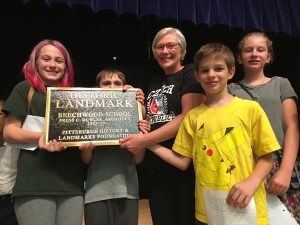 Thanks to contributions from nine corporate sponsors and two foundations in 2016-17, PHLF was able to involve students in grades three through eight from ten Pittsburgh Public Schools in a variety of field trips, art activities, and in-school programs from January 13 through June 8.
Thanks to contributions from nine corporate sponsors and two foundations in 2016-17, PHLF was able to involve students in grades three through eight from ten Pittsburgh Public Schools in a variety of field trips, art activities, and in-school programs from January 13 through June 8.On May 25, during school-wide celebrations for families, fifth-grade students from Pittsburgh Beechwood and Pittsburgh Whittier read essays they had written describing why their school was worthy of a Historic Landmark Plaque. These essays had, in fact, confirmed earlier recommendations by PHLF’s Historic Plaque Designation Committee to award plaques to each school. After the students read their essays in auditoriums packed with family members, they presented the plaques to their principals. Valerie Lucas, principal of Pittsburgh Whittier, and Sally Rifugiato, principal of Pittsburgh Beechwood, were thrilled.
PHLF’s Executive Director, Louise Sturgess, attended both celebrations and emphasized that the plaques do not place any restrictions on the Pittsburgh Public Schools. Rather, the goal of PHLF’s Historic Landmark plaque program is to recognize places of architectural significance, identify the architect and design/construction dates, and foster a preservation ethic among the people who use the landmark.
The evening celebrations at Pittsburgh Beechwood and Pittsburgh Whittier also showcased poems, artwork, and three-dimensional models of Pittsburgh landmarks that students had created during PHLF”s “Building Pride/Building Character” program. See photos in the gallery below.
Through tours, art activities, and in-school programs created for the “Building Pride/Building Character” program, students learn about the places and elements that give character to their city––and the more they learn about Pittsburgh, the more “connected” and proud they feel.
As students explore, observe, discuss, and create, they realize that their city is a work in progress. There is always something new being constructed, or something old of value being restored or reused.
They begin to understand that they are works in progress, too. They are growing up and growing older, just as our city is. The older students become, the more “character” they develop. Character is who you are––and who other people think you are. And people, just like cities, are most fascinating when they are full of character-defining traits.
Through “Building Pride/Building Character,” students discover a lot about their school, neighborhood, and city––and a lot about themselves––and fulfill academic standards in the process.
-
June 20 Reception for Landmarks Scholarship Winners and Former Recipients
The Landmarks Scholarship Committee, chaired by PHLF Trustee David Brashear, will welcome four new scholarship recipients and four new honorable mention recipients during a reception on Tuesday, June 20, from 5:00 to 7:00 P.M. on Mt. Washington.
“Our former scholarship and honorable mention recipients are invited to join us on June 20 to help us welcome our 2017 award recipients and their parents,” said Mr. Brashear. “This event is always a wonderful opportunity for us to connect with a group of young people who have achieved academic excellence and possess the potential to make a difference in the Pittsburgh community and beyond. The students we select already feel connected to the city and its history and will hopefully continue to serve the region as leaders in promoting PHLF’s values.”
The four scholarship recipients in 2017 are:
- Eleanor A. Newman, from Barack Obama Academy of International Studies, who will be attending Harvard College and studying Government.
- Brett Monae Searcy, from Barack Obama Academy of International Studies, who will be attending Geneva College and studying Electrical Engineering.
- James J. Shaver, from Pittsburgh Central Catholic, who will be attending the University of Michigan and studying Biology and Biomedical Engineering.
- Liza B. Wilson, from Oakland Catholic High School, who will be attending American University in Washington, D.C, and studying International Business.
Each scholarship recipient will receive a $6,000 scholarship (for book and tuition expenses only), payable over a four-year period to his/her college/university if certain requirements are met.
Because the Scholarship Committee received a record-breaking 81 applications this spring and found so many of the candidates to be excellent, the committee also awarded four Honorable Mentions––a one-time award of $250––to the following people:
- Cassondra D. Hanna, from Gateway High School, who will be attending Fisk University and studying History & Sociology.
- Sarah T. Losco, from North Allegheny Senior High School, who will be attending Penn State University and studying English & Secondary Education.
- Breanna M. McCann, from South Fayette High School, who will be attending Robert Morris University and studying Political Science & History.
- Jiatian Qu, from North Allegheny Senior High School, who will be attending Rice University and studying Psychology while pursuing a pre-med track.
Generous Gifts Continue to Make the Landmarks Scholarship Program Possible
PHLF’s Scholarship Program is funded by generous contributions from the Brashear Family Named Fund and by donations to the Landmarks Scholarship Fund, including contributions to the 2008 and 2014 Scholarship Celebrations. To contribute, visit: www.phlf.org or contact Mary Lu Denny at PHLF (marylu@phlf.org; 412-471-5808, ext. 527).The Landmarks Scholarship Program is the culmination of PHLF’s educational programs for thousands of students from grades PreK-12 and the beginning of its programs for adults. It gives Allegheny County students an incentive to excel in school, become involved in their communities, and express their commitment to this region in a meaningful way. Since the program’s inception in 1999, sixty-eight scholarships have been awarded to high-achieving students in Allegheny County. Thirty-one of those winners graduated from Pittsburgh Public Schools and 37 graduated from other schools within Allegheny County. Eight honorable mention awards have been made since 2016, when that award category was added.
The Pittsburgh History & Landmarks Foundation Scholarship is offered each year. Applications for the 2017-18 school year will be available in January 2018. Applicants must:
- live in and attend school in Allegheny County;
- be a high school senior who has been accepted to a college or university;
- have a cumulative GPA at the end of the first semester senior year of 3.25 or greater;
- have a significant interest in local history, architecture, and/or landscape design; and
- write an essay describing a place in Allegheny County that is important to him/her, complete an application, and submit two letters of recommendation (one must be from a community representative).
-
Fifth-Grade Students Win Historic Landmark Plaque for Whittier School
Fifth-grade students read essays to PHLF representatives on April 26 describing what Whittier School meant to them and noting the architectural significance of the school, designed in 1939 by M. M. Steen.
After hearing their essays, David Vater, vice-chair of PHLF’s Historic Plaque Designation Committee, said that the students had indeed presented evidence that confirms the committee’s recommendation. As a result of their good work, fifth-grade students will present the Historic Landmark plaque to their principal on May 25, during Whittier’s Arts and Science Night.
“I loved seeing and hearing the students’ reaction to the news that they would receive the plaque,” said Karen Cahall, PHLF education coordinator. “The tears of joy and relief were touching and showed how much of themselves the students had put into their essays. I was impressed with their presentation skills, with their essays, and with how many of the students came up to shake our hands to say thank you. This was a memorable experience––and we look forward to May 25 with much anticipation.”
This program is one of many educational initiatives with the Pittsburgh Public Schools, made possible through PHLF’s “Building Pride/Building Character” program that is funded by corporate contributions through the State’s Educational Improvement Tax Credit Program and by grants from the McSwigan Family Foundation and Alfred M. Oppenheimer Memorial Fund of The Pittsburgh Foundation.
Also through PHLF’s “Building Pride/Building Character” program, fourth-grade students from Pittsburgh West Liberty and Pittsburgh Banksville recently participated in our Career Awareness program, and third-grade students from eight Pittsburgh Public Schools will learn the story of Pittsburgh during trolley tours to five historic sites in Pittsburgh in May and June.
See below, a gallery of photos of the trolley tour on April 20 and of the Career Awareness program on April 26 with Pittsburgh Public School students.
-
Help Preserve a Modern Masterpiece

PHLF members and friends are invited to attend a special event to benefit the preservation of the Frank House in Shadyside, designed in 1939-40 by Walter Gropius and Marcel Breuer. Photo by Ezra Stoller, courtesy of Alan I W Frank.
Join the Art Deco Society of Washington during the 14th World Congress and Alan I W Frank, president and chief historian of the Alan I W Frank House Foundation, on Monday, May 22, for a dinner to benefit the preservation of the Frank House, designed in 1939-40 by Walter Gropius and Marcel Breuer.
The open bar reception, beginning at 5:00 p.m., and the dinner at 6:30 p.m., will be held in the Crystal Room of St. Nicholas Greek Orthodox Cathedral at 419 South Dithridge Street, in Pittsburgh’s Oakland neighborhood. Guests will enjoy a screening of a new presentation on the Frank House by leading architectural historian Barry Bergdoll, followed by a discussion with Alan I W Frank.
- RSVP and secure tickets by May 17: $140 per guest
- Register at: ly/FrankHouseMay22 or for information: congress@adsw.org
- Inquire about a unique opportunity to tour the ground floor of the Frank House.
The Alan I W Frank House (1939-40) is a work of art brought to life by the most esteemed and influential design visionaries of the 20th-century, Bauhaus founder Walter Gropius and Marcel Breuer. It remains an unparalleled modern masterpiece and a distinct expression of Pittsburgh’s vital relationship to architecture and innovation.
With the house, interiors, furnishings, and landscape original and virtually unchanged, the mission of the Alan I W Frank House Foundation is to preserve and program this site of modern heritage, providing future access to an international community of art, design, and architecture professionals and enthusiasts, thereby enhancing our community with an exceptional cultural resource. The Alan I W Frank House Foundation, a 501(c)(3) public charity, welcomes direct donations year-round: www.thefrankhouse.org

